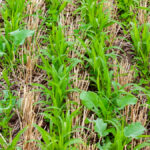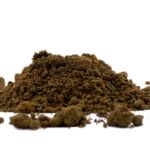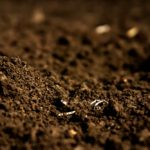1.
Tag Archives Soil

The economics of cover crops
Ridgetown research highlights profitability gains and losses in grain and vegetable systems
The impact of cover crops on profit margins is a long-contested subject, but new data from the University of Guelph shows some clear winners and losers. Vegetable crop yields, specifically, […] Read more

Cargill launches regenerative agriculture program
The company is the latest to push improved soil practices to meet its consumer commitments
Cargill plans to have an impact on regenerative agriculture practices on 10 million acres in North America. The company recently announced plans to meet its climate commitments. Cargill will focus […] Read more

Understanding and managing low pH knolls
The OMAFRA Field Crop Team wants farmers to get to know their knolls
While high pH knolls tend to be more common in Ontario, often caused by soil erosion leaving higher pH calcareous subsoils, this is not the case for all regions. How […] Read more
Managing eroded knolls
OMAFRA Field Crop Report for September 10
Field Crop News – We’ve all seen them. Hilltops. Whitecaps. High spots where the crop struggles year after year. Eroded knolls are common to Ontario agriculture and cost farmers in […] Read more

New farm research group offers more by pooling resources
Central Ontario soil research and stewardship groups try two-year collaboration
A partnership based out of Trent University is offering farmers free access to its expertise. The Quinte Farm Research and Stewardship Collaborative is a two-year initiative described by project co-ordinator […] Read more

Lasting Impact: Technology helps living soils knowledge
Different crops feed soil microbes in different ways
Updated Aug. 11, 2020 This article is the final instalment of a three-part series highlighting lessons learned from two long-term crop rotation experiments at the Ontario Crops Research Centres at […] Read more

New soil test looks at microbial populations
A&L Canada Laboratories Inc. recently launched VitTellus Bio, a new soil health test that quantifies soil microbial populations. VitTellus Bio complements the VitTellus Soil Health test, which is used to […] Read more

How to prevent compaction at harvest
Limiting damage starts with decisions when combines go into fields
Field activity makes soil compaction worse. That’s just the nature of the work. But there are methods to reduce it, in favourable and unfavourable conditions. Why it matters: Ways to […] Read more

Lasting impact: The secret to increasing carbon is in the soil
Microbial activity, not volume of biomass, gets more credit for adding carbon
This article is part two of a three-part series highlighting lessons learned from two long-term crop rotation experiments at the Ontario Crops Research Centres at Elora and Ridgetown, Ont. The […] Read more

Lasting impact: The penalty of poor crop rotations
Long term trials show the soil health degradation of short rotations
This article is the first of a three-part series highlighting lessons learned from two long-term crop rotation experiments at Elora and Ridgetown, Ont. Howard Buffett authored a book a few […] Read more
